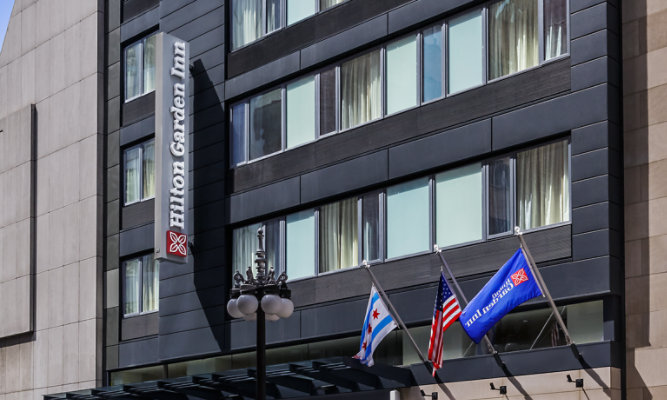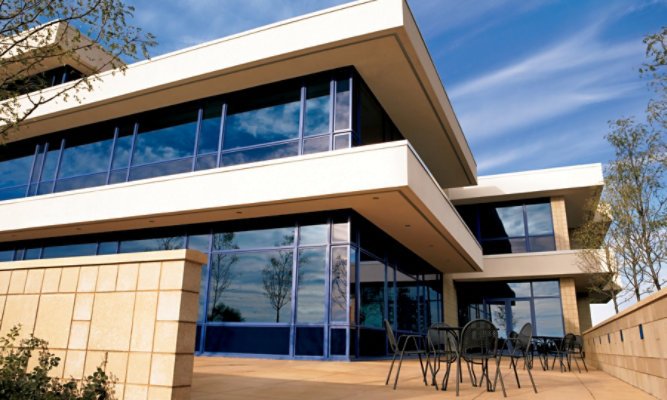
Cool Metal Roof and Wall Panels: A Key Contributor to Obtaining LEED Certification
August 2024
Previously published on Building Enclosure - Read Here
The Leadership in Energy and Environmental Design (LEED®) certification is globally recognized as a leading symbol of sustainability achievement. It provides a blueprint for some of the most cost-saving, energy-efficient, and sustainable buildings in the world. With the USGBC's release of LEED v5 for public comment earlier this year, architects and contractors are already strategizing on the best practices for earning LEED credits. So, how can the coil and extrusion coatings specified for metal roofs and walls contribute to LEED credits?
Coil and Extrusion Coatings and Their Role in Sustainability
Specifying coil and extrusion coatings on the building envelope can offer many sustainability attributes. A prime example is coil coatings, which are applied in a controlled environment at a staggering 800 feet per minute, using processes that minimize waste and increase efficiency. Additionally, VOCs produced during the curing process can be captured and converted into energy for manufacturing, demonstrating the industry's dual commitment to environmental responsibility and efficiency innovation. These practices allow the industry to meet or exceed EPA standards and can even help earn LEED credits.
Similarly, extrusion manufacturing processes have made significant strides in carbon minimization by using low-carbon primary aluminum and increasing the use of recycled materials. Furthermore, incorporating extruded sunshades and louvers not only makes buildings more energy-efficient but also qualifies for LEED credits, highlighting the industry's commitment to environmental stewardship and longevity.
When selecting proper coil and extrusion coatings, it's essential to consider the variety of formulations available, including AAMA 2605 70% PVDF (polyvinylidene fluoride). PVDF coatings are known for their excellent adhesion, superior flexibility, and formability, making them ideal for long-term exposure to outdoor elements. Durability is a key benefit, as PVDF coatings resist harsh elements such as chemicals, humidity, acid rain, and salt, ensuring the building maintains its appearance over time. PVDF coatings require less maintenance than traditional paints, reducing overall upkeep costs.
Cool Roofs and Cool Walls and Their Contribution to LEED Certification
Solar reflective coil and extrusion coatings, also known as cool coatings, include special pigments to reflect non-visible UV wavelengths, which are responsible for unwanted solar heat gain. By reflecting more solar energy from the roof surface, the building requires less energy to cool, resulting in lower utility bills, contributing to the building's overall energy efficiency and helps mitigate the urban heat island effect.
Cool roofs and walls play a crucial role in achieving LEED certification. They help reduce the Heat Island Effect, a phenomenon where urban areas are significantly warmer than their rural surroundings due to human activities. By using reflective coatings on walls, the amount of heat absorbed by the building is reduced, leading to lower cooling costs and improved comfort for occupants.
The Thaden School in Bentonville, Arkansas, is an illustrative example of industry-leading use of solar reflective coil coatings on the metal roof and wall panels. This project brings innovation and design to the forefront by achieving world-class energy efficiency and sustainability in the built environment.
The school's Reels and Wheels buildings are coated with Sherwin-Williams® Fluropon® and formulated with solar-reflective pigments that help resist heat absorption, meet U.S. Green Building Council’s LEED, and Cool Roof Rating Council program criteria, and match the green-gold metallic finish of a 1967 Mustang Shelby Cobra GT500 sports car. Additionally, the finished metal panels include a specialty metallic clear topcoat to maximize sparkle and enhance color intensity.
The use of these coatings not only provides a visually stunning finish but also helps lower energy consumption. Thaden School's project showcases the innovative use of cool roofs and cool walls to create energy-efficient educational facilities. The school's design allows students to monitor their consumption of energy, food, and water, highlighting the global impact of local behavior.
Going beyond LEED Certification
Obtaining LEED certification is often a goal for building owners, and there are now even more incentives from the government to invest in technologies and building products with sustainability attributes. But the financial savings don’t stop there. Cool metal roofs can save up to 40% more on heating and cooling costs compared to shingles and other roofing materials, according to the Metal Roofing Alliance (MRA).
Additionally, a benefit of metal building products is that once the metal does need to be replaced, it can be recycled, further contributing to the sustainability attributes. Up to 90% of metal can be recyclable and has proven to be the best material for attaching solar panels on a metal roof. Metal also has a low life cycle cost, including lower maintenance and long-term durability.
Cool metal roofs and walls can enhance energy efficiency, reduce material costs, and improve the aesthetic value of buildings. By selecting manufacturers that offer high-quality, solar reflective coil and extrusion coatings, architects and contractors can ensure that their projects meet the highest standards of sustainability and performance.
Sourcing a LEED certified Coatings Manufacturer
Lastly, when collaborating with partners to select coatings that enhance your project's overall LEED score, the following criteria will be helpful.
- Product Certification and Compliance: Ensure that the coatings provider offers products that meet LEED standards and are certified by relevant authorities, such as the Cool Roof Rating Council (CRRC), or the U.S. Green Building Council (USGBC). Verify that their products contribute to LEED credits in categories like energy efficiency, material and resource use, and indoor environmental quality.
- Sustainability Commitment: Look for providers with a strong commitment to sustainability, including practices like reducing VOC emissions, using recycled materials, and minimizing environmental impact during the production process. A provider that prioritizes practices demonstrates a broader dedication to sustainability beyond just their products.
- Range of Products: Choose a provider that offers a wide range of coatings with different properties, such as solar reflectivity, durability and color offerings. This variety ensures that you can find a solution tailored to your specific project needs, whether it's for roofing, walls, or other architectural elements.
- Technical Support and Expertise: Select a provider that offers strong technical support and expertise. This includes guidance on product selection, application techniques, and understanding how their products contribute to achieving LEED credits. A knowledgeable provider can help you navigate the complexities of LEED certification and ensure optimal results.
- Case Studies and References: Review case studies and work directly with the coatings provider to review project requirements and sustainability goals. This collaboration streamlines the process of product specification. Additionally, coatings providers can provide resources for LEED certification.
Related Articles
News & Media
Featured Media
Stay up-to-date with the latest product releases, news and upcoming industry events.
Go to Resource Center



